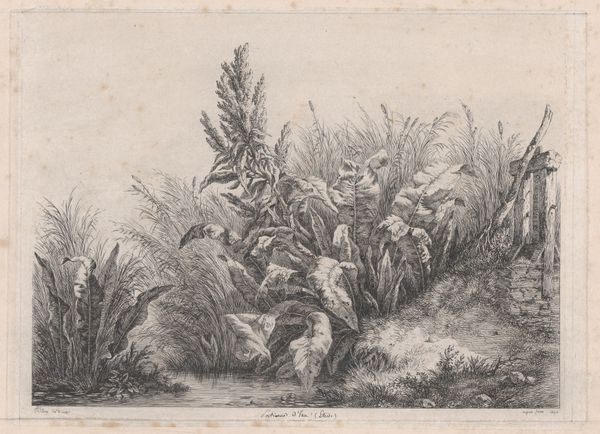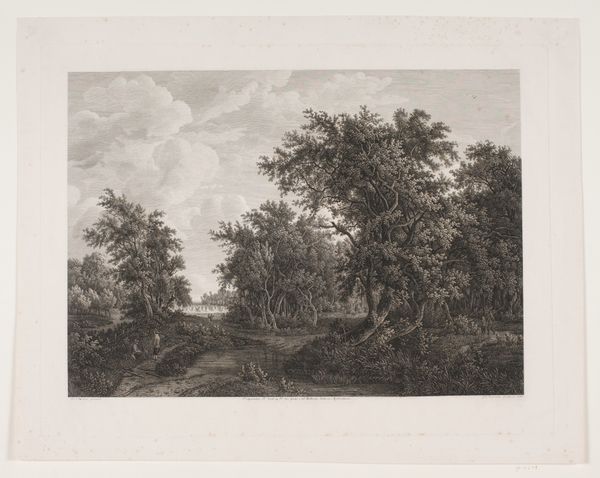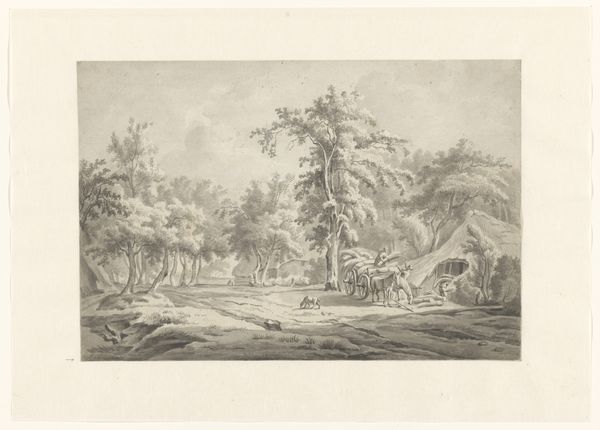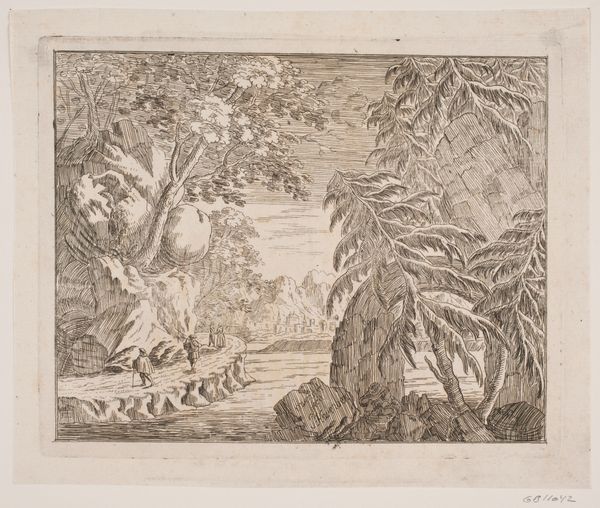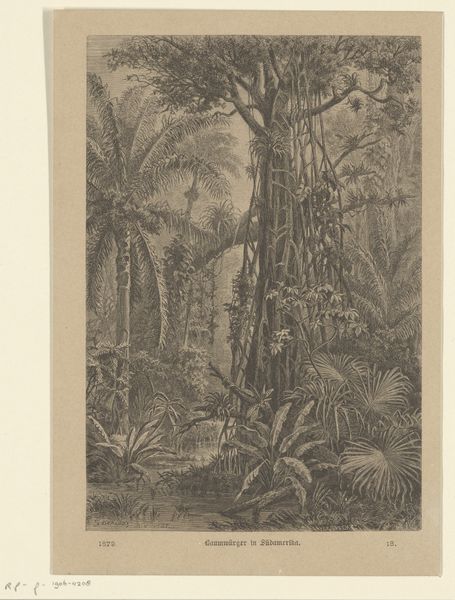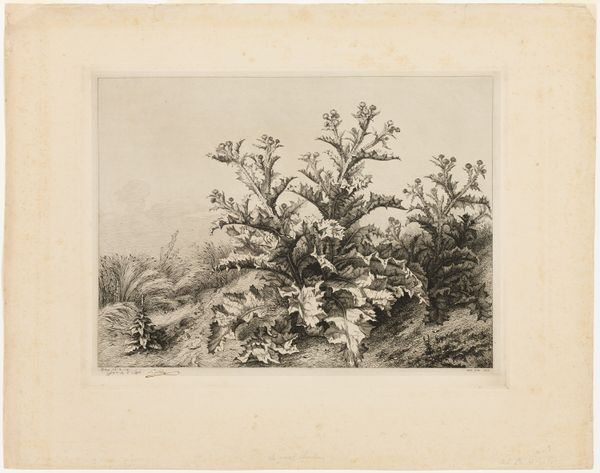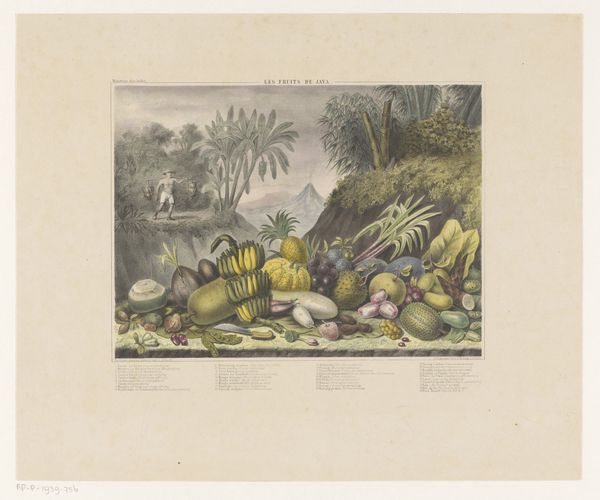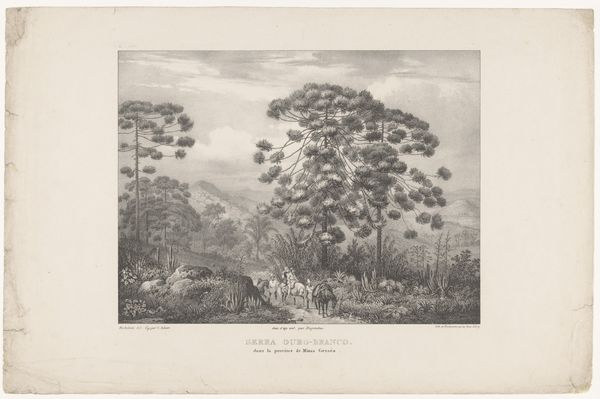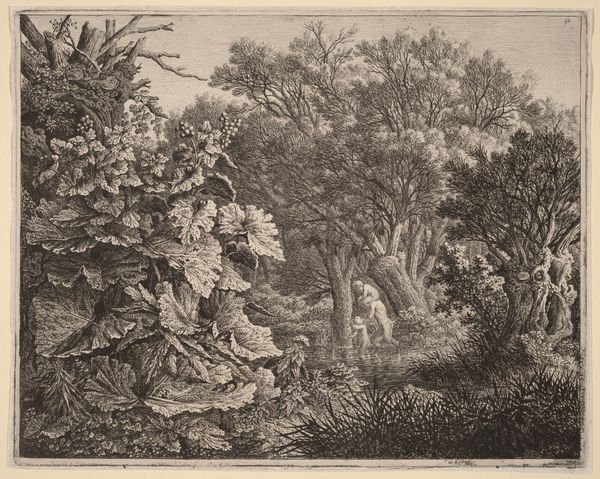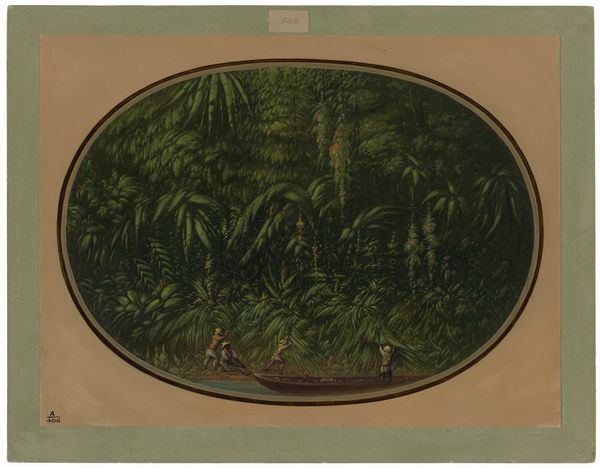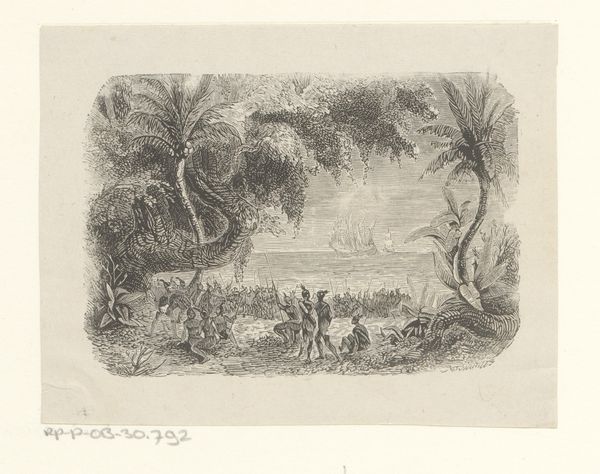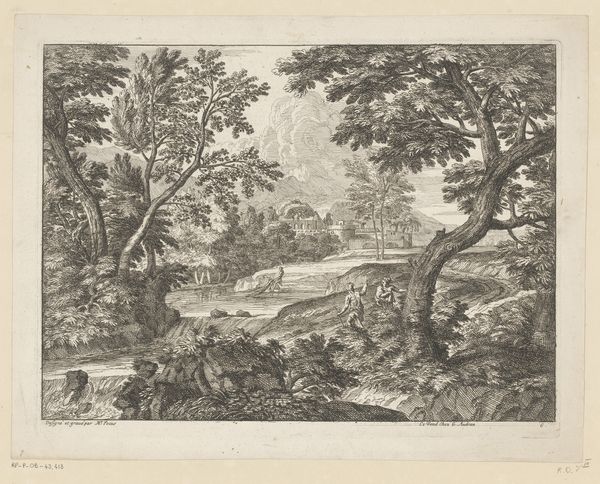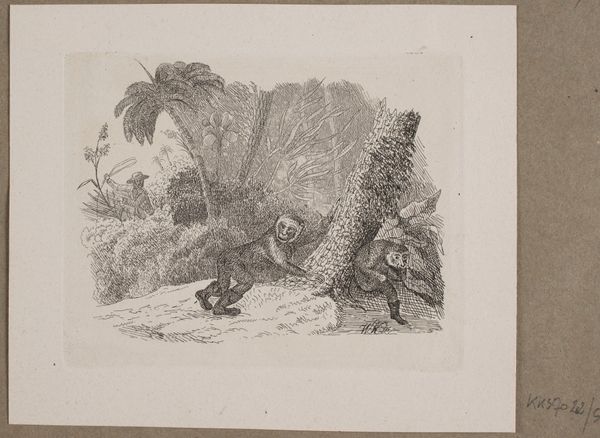
Regenwoud op Kosrae (Ualan), Oostelijke Carolinen, Micronesië 1845 - 1852
0:00
0:00
print, engraving
# print
#
asian-art
#
landscape
#
romanticism
#
engraving
#
realism
Dimensions: height 259 mm, width 358 mm
Copyright: Rijks Museum: Open Domain
Curator: Let's discuss this evocative print titled "Regenwoud op Kosrae (Ualan), Oostelijke Carolinen, Micronesie" – "Rainforest on Kosrae (Ualan), Eastern Carolines, Micronesia." It's an engraving by Friedrich Wilhelm Heinrich von Kittlitz, created between 1845 and 1852. Editor: My initial impression is of an overwhelming sense of enclosure. The dense foliage, rendered meticulously in black and white, presses in from all sides. There's almost a claustrophobic feeling despite it depicting an open landscape. Curator: It speaks volumes, doesn't it, about the romantic era's fascination with the "exotic" and untamed corners of the world. Consider the history of European exploration and scientific expeditions during this period, especially in Oceania. Von Kittlitz was, in fact, a naturalist and explorer. Editor: You can see how his scientific eye informs the detailed rendering of the plants. Notice the distinct textures and shapes of each leaf, each stem. It's an exercise in precision. And yet, there is some evidence of romanticism in how its depicted overall. Curator: Precisely. While striving for realistic depiction, the artist undoubtedly shapes the narrative. I can’t help but think of the concept of paradise found. The historical and sociopolitical aspects related to environmental exploitation during the era, viewed now with contemporary intersectional awareness. Editor: Absolutely. The use of light and shadow creates a beautiful pattern throughout the print, drawing the eye deeper into the undergrowth and the forest’s overall three-dimensional structure. Curator: Yes. And consider how colonialism has reshaped those landscapes – physically, culturally, economically. We now engage critically with these depictions, not as simple representations, but as part of a long and complex historical process that demands our ongoing scrutiny. Editor: So true. Kittlitz’s approach to representing a tropical landscape combines keen observation and artistic arrangement—we can appreciate it formal qualities even as we consider its broader implications. Curator: A potent reminder of both the allure and the troubled history that so often accompanies such visions. Editor: Yes, truly an image that rewards close looking—and careful consideration.
Comments
No comments
Be the first to comment and join the conversation on the ultimate creative platform.
